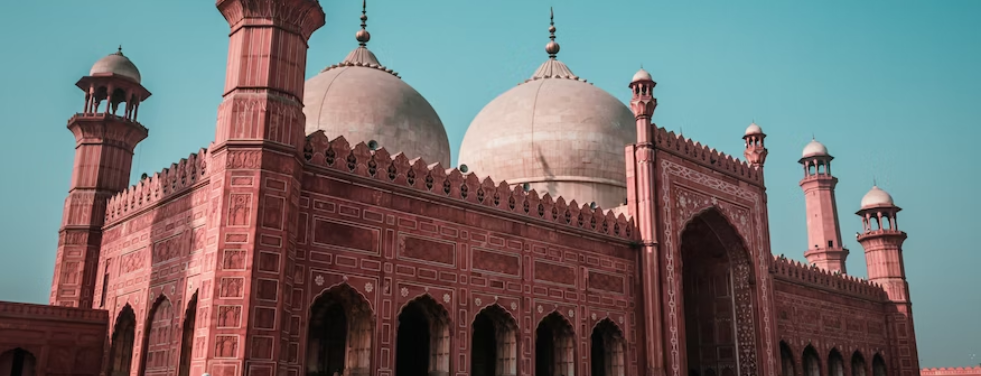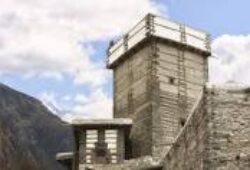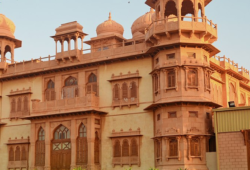Badshahi Mosque
 Posted On
Posted On
Badshahi Mosque, also known as Badshahi Masjid, is the second largest mosque in Pakistan and the 8th largest mosque in the world in terms of capacity.
The mosque can accommodate roughly 100,000 worshipers.
Aurangzeb Alamgir, the sixth Mughal emperor, built the Badshahi Mosque in 1673 AD. The red bricks were brought from Jaipur, India.
Red Structure
The red structure and extraordinary architecture make it a majestic and excellent place for tourisms.
Built in 1671, the Badshahi Mosque is the crown jewel of Lahore, a symbol of the Mughal Empire (1526–1857) and one of the most beautiful places in Pakistan.
Its architecture is characterized by carved red sandstone, which was typical of the Mughal era.
The mosque’s vast courtyard can accommodate up to 100,000 worshippers, making it the second largest mosque in Pakistan! I recommend spending at least a few hours here to admire all the amazing architectural details.
For most of its history, the Badshahi Mosque was used as a military base by the Sikhs who ruled Lahore from 1799 to 1849.
The courtyard of the mosque used to be a stable for army horses at the time.
When the British took over after the fall of the Sikh Empire, they continued to use the mosque as a military post.
Prayer
It was only in 1947, when Pakistan gained independence, that the Badshahi Mosque was restored back to its original purpose of worship and prayer.
The Badshahi Mosque is one of the few major architectural monuments built during the long reign of Emperor Aurangzeb from 1658 to 1707.
Currently the fifth largest mosque in the world, it was undisputedly the largest mosque in the world between 1673 and 1986, when the Faisal Mosque was built in Islamabad.
Although built late in the Mughal era in a period of relative decline, its beauty, elegance and scale embody Mughal cultural achievements like no other monument in Lahore.
Construction of the mosque began in 1671 under the direction of Muzaffar Hussain (Fida’i Khan Kok), Aurangzeb’s brother-in-law and the governor of Lahore.
Shah Jahan
It was originally planned as a reliquary to protect a lock of the Prophet’s hair. Its size is influenced by the Jama Mosque in Delhi, which was built by Aurangzeb’s father Shah Jahan.
The plan of the Badshahi Mosque is essentially a square measuring 170 meters on each side.
Since the northern end of the mosque was built along the edge of the Ravi River, it was not possible to install a northern gate like the one used in the Jama Mosque, and a southern gate was also not built to maintain overall symmetry.
In the courtyard, the prayer hall has four minarets that mirror the four minarets in each corner of the mosque’s perimeter in miniature.
Such was the prominence of the mosque in the imperial vision that it was built just a few hundred meters west of the Lahore Fort.
A special gate was added to the fort facing the mosque and designated as the Alamgiri Gate.
Soldiers
The space in between – the future Hazuri Bagh garden – was used as a parade ground where Aurangzeb inspected his soldiers and courtiers.
The Hazuri Bagh appears to be at a lower level than the mosque as the mosque was built on a six meter plinth to prevent flooding.
The mosque did not fare well during the reign of Ranjit Singh, the Maharaja of the Sikh Empire.
When Ranjit Singh took control of Lahore in 1799, the courtyard of the mosque was used as a stable and the hujras (cells) around the perimeter were occupied by his soldiers.
Ranjit Singh himself used the adjacent Hazuri Bagh as his official royal court.
When William Moorcroft of England visited Lahore in 1820, he noted that the mosque was used as a training ground for the Sipahi infantry.
Twenty years later, a mild earthquake struck Lahore, collapsing the delicate marble turrets atop each minaret.
The open towers were used as firing ranges a year later when Ranjit Singh’s son, Sher Singh, occupied the mosque to bombard Lahore Fort during the Sikh Civil War.
After the British took control of Lahore in 1846, they continued to use the Badshahi Mosque as a military garrison.
It was not until 1852 that the British established the Badshahi Mosque Authority to oversee the restoration of the mosque so that it could be returned to Muslims as a place of worship.
Although repairs were made, it was not until 1939 that extensive repairs began under the supervision of architect Nawab Zen Yar Jang Bahadur.
Repairs continued until 1960 and were completed at a cost of 4.8 million rupees.
Sources: thediaryofanomad | orientalarchitecture.com


